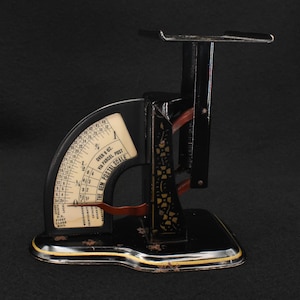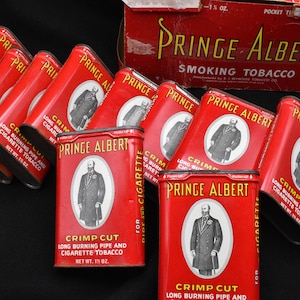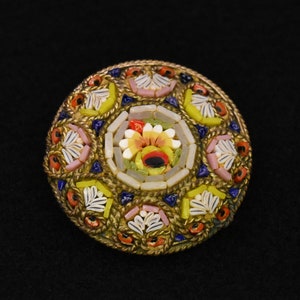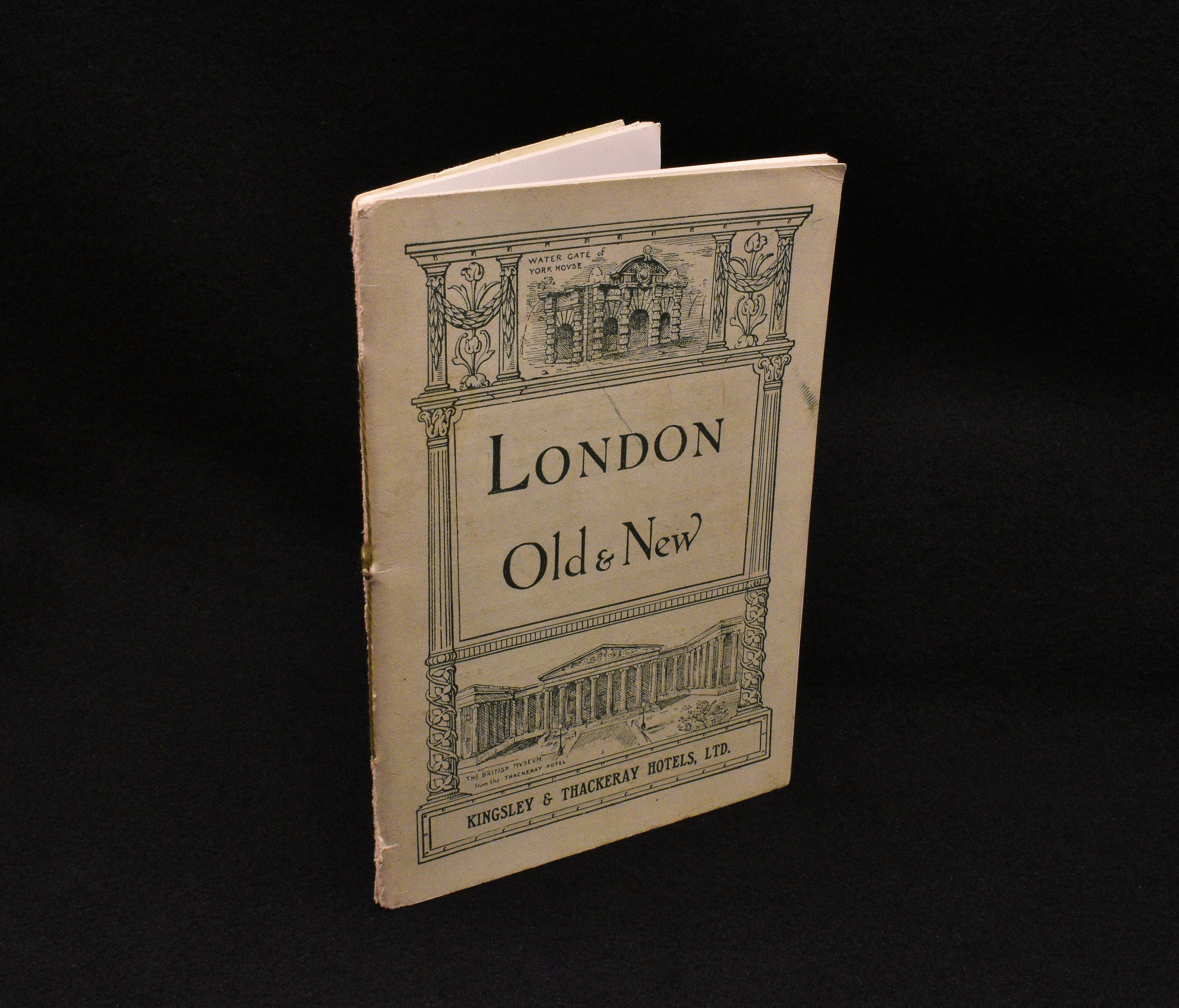
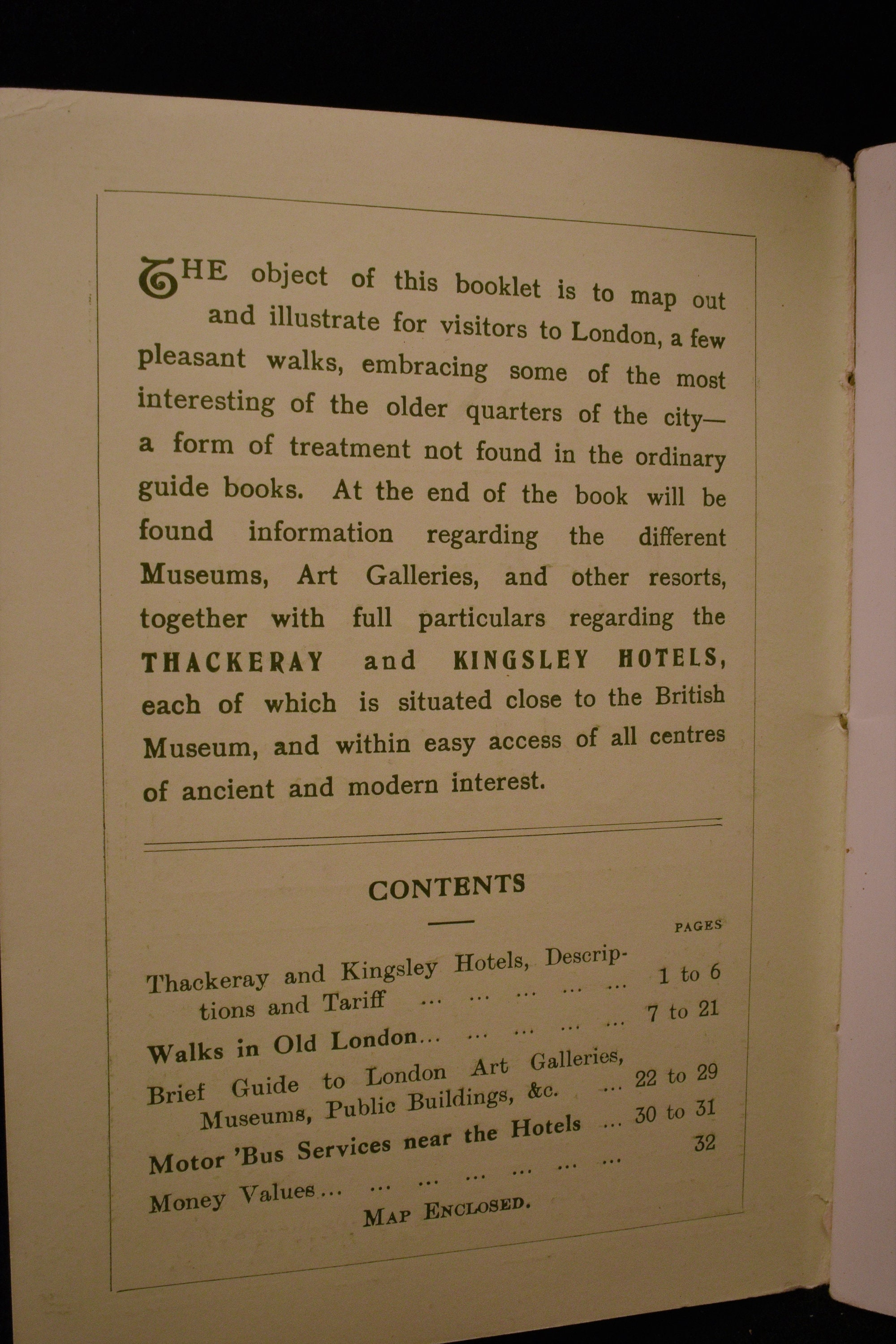
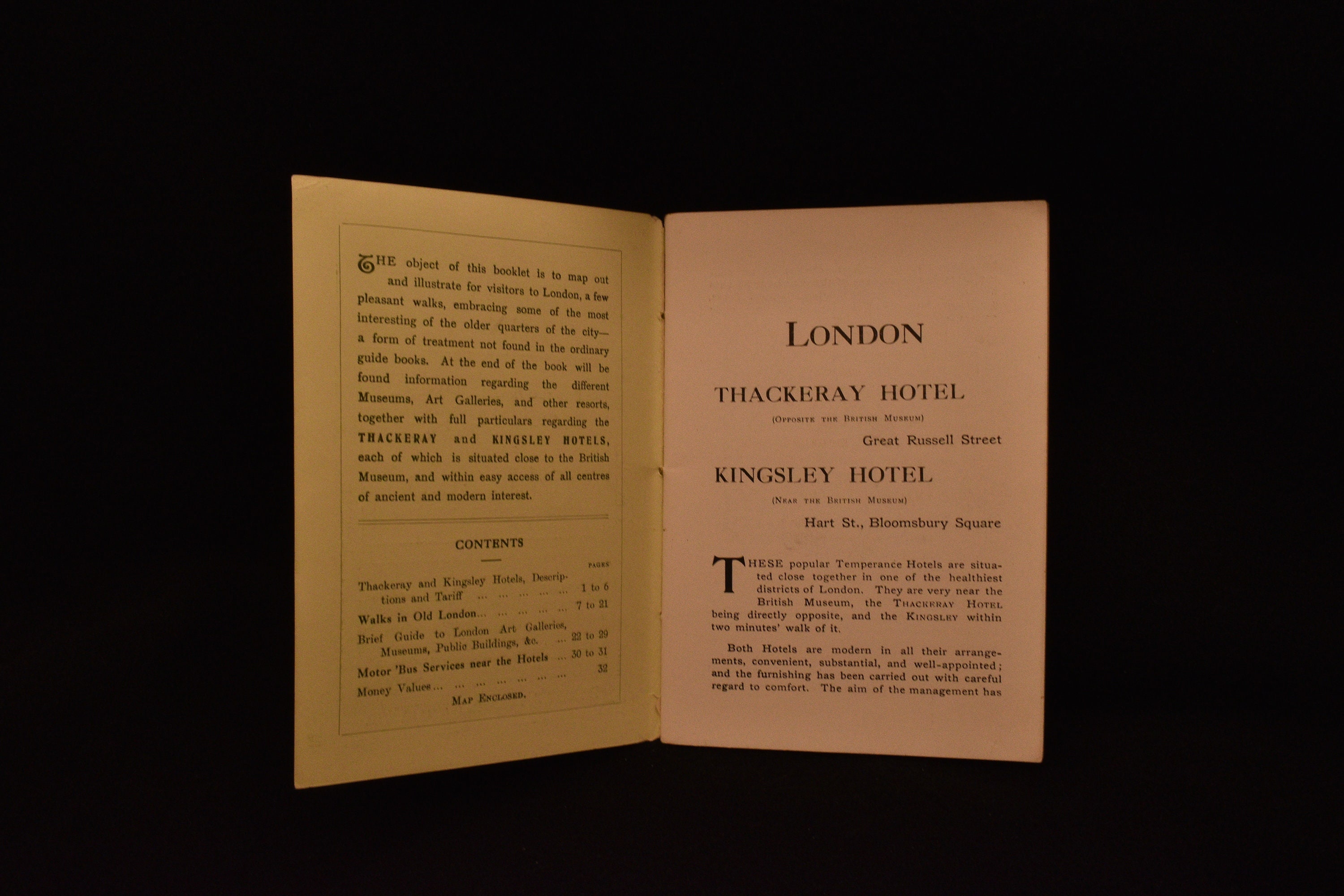
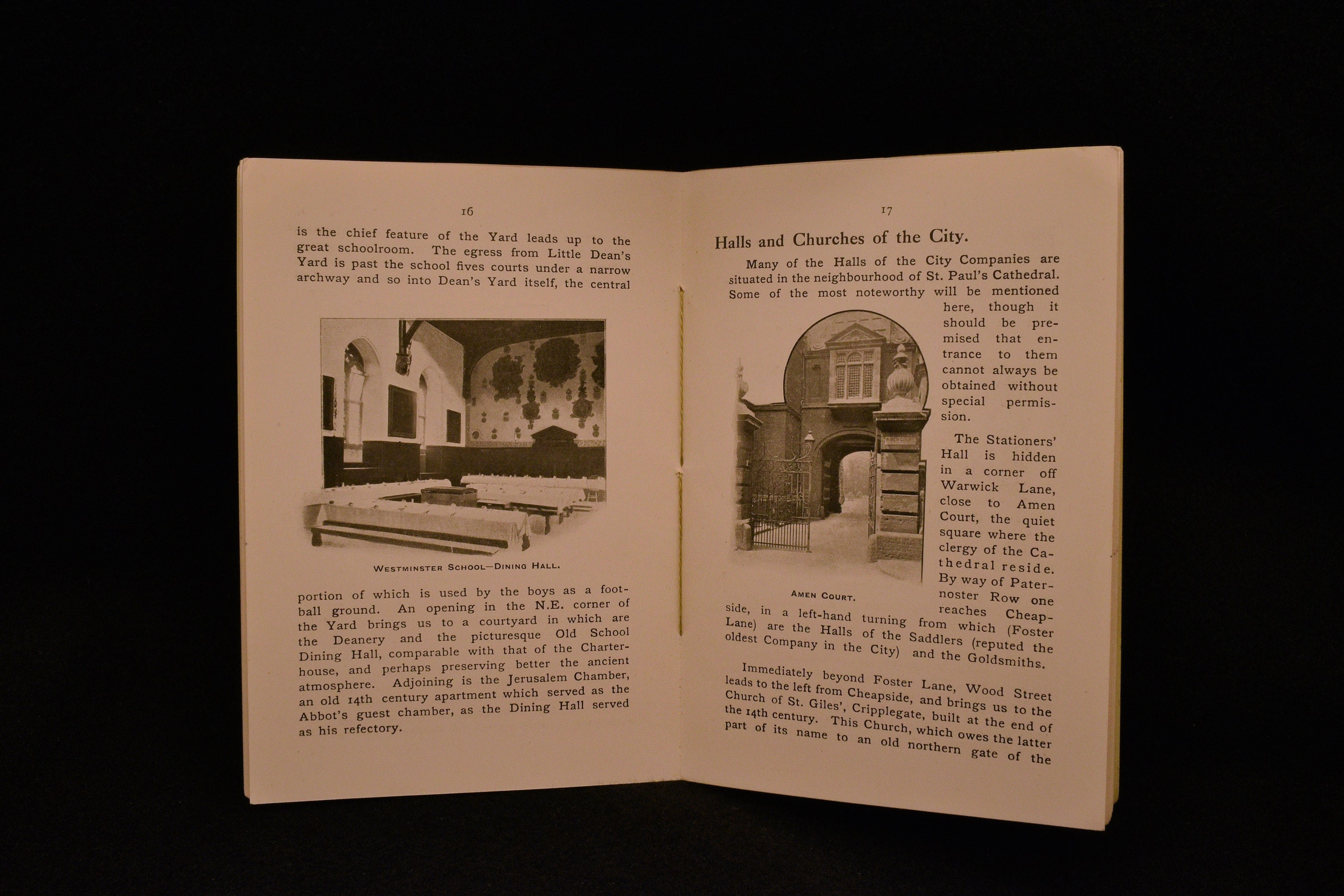
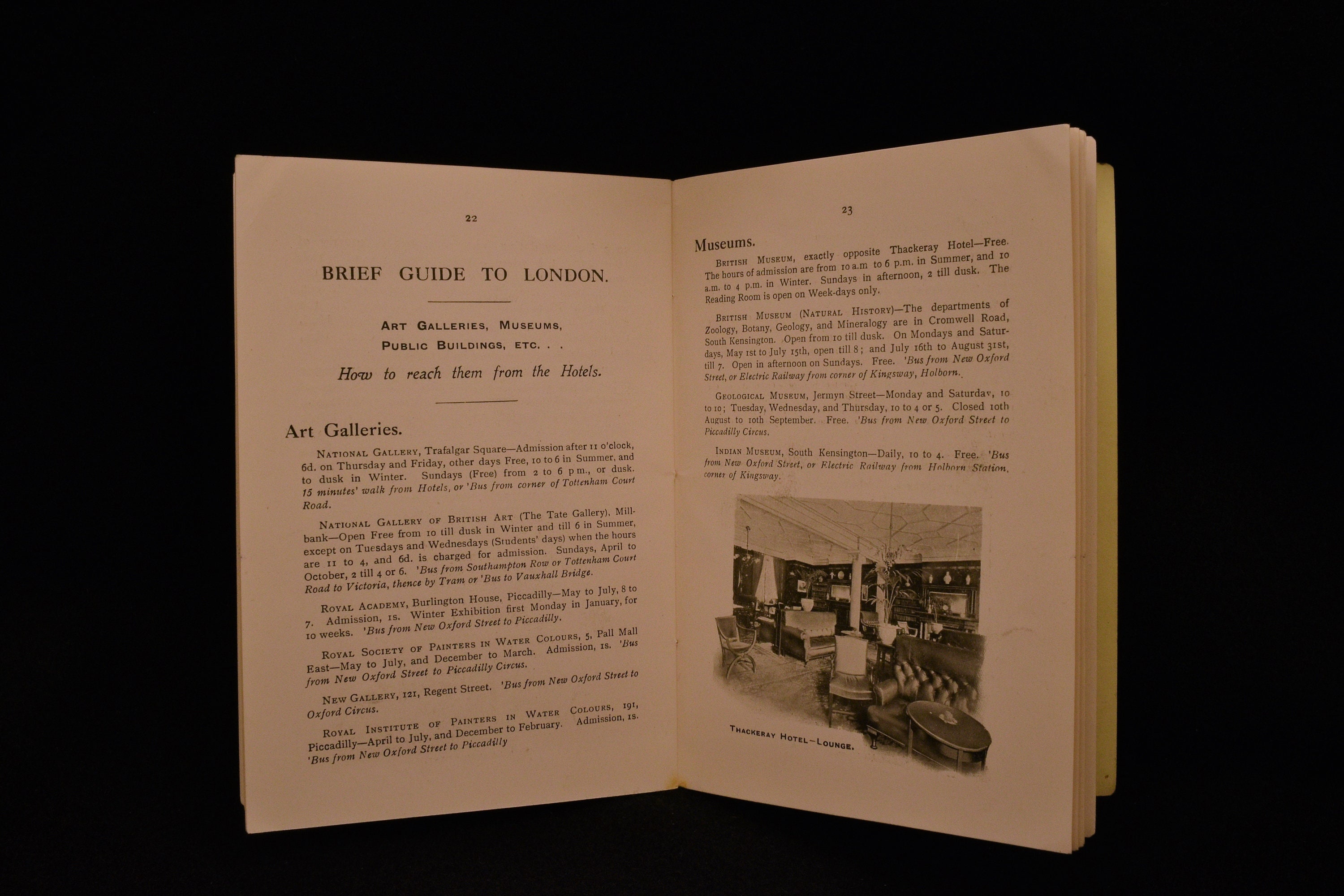
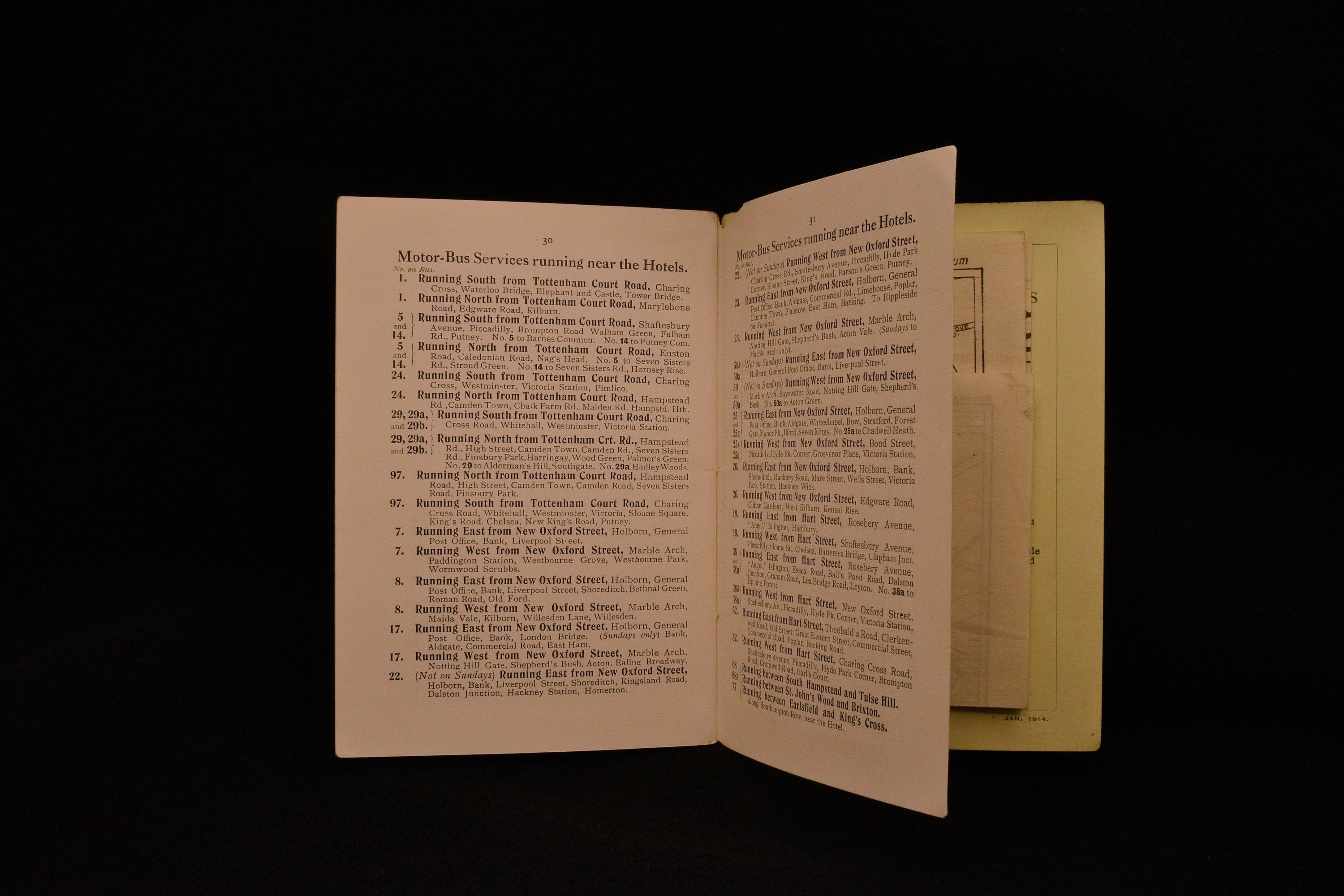
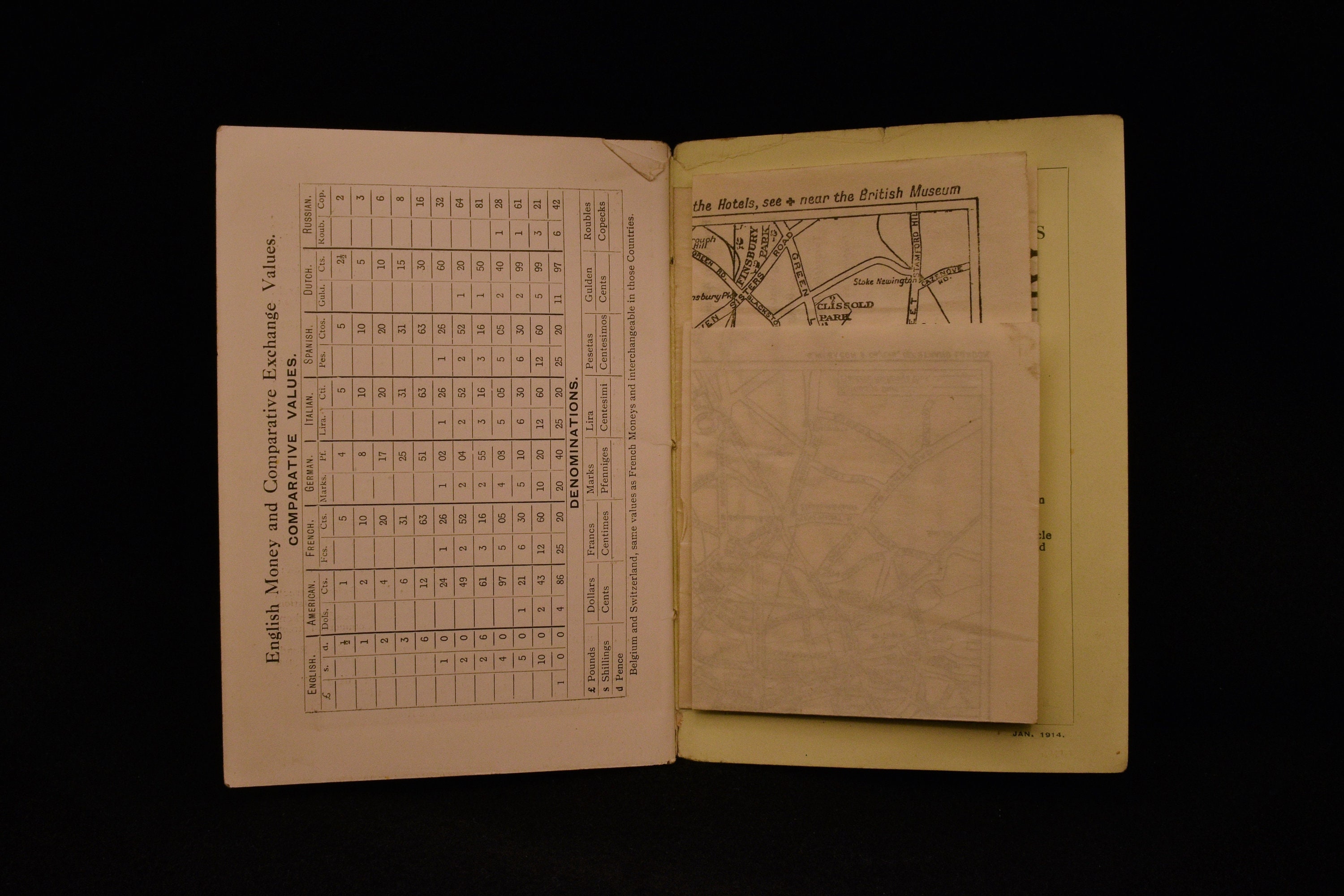
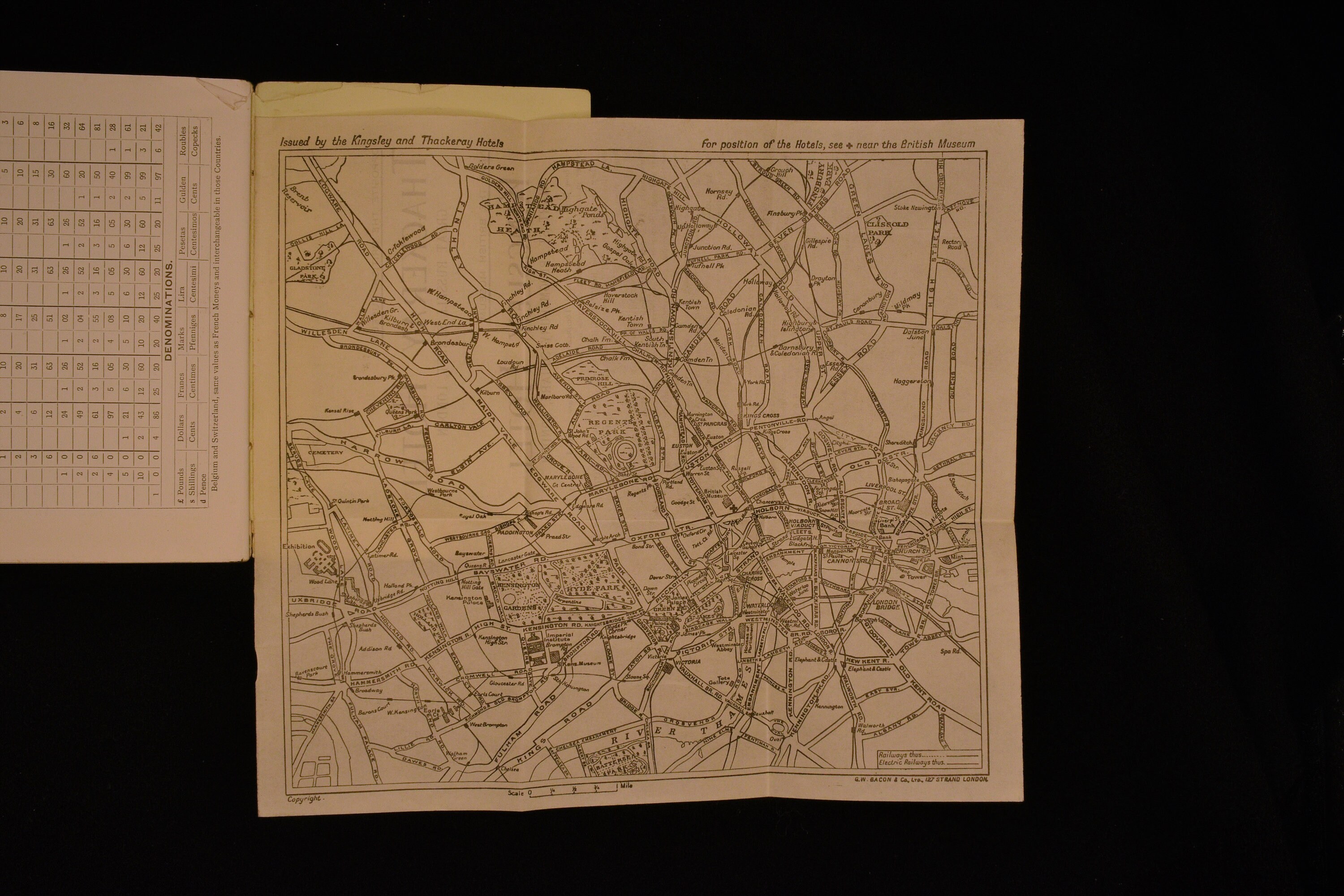
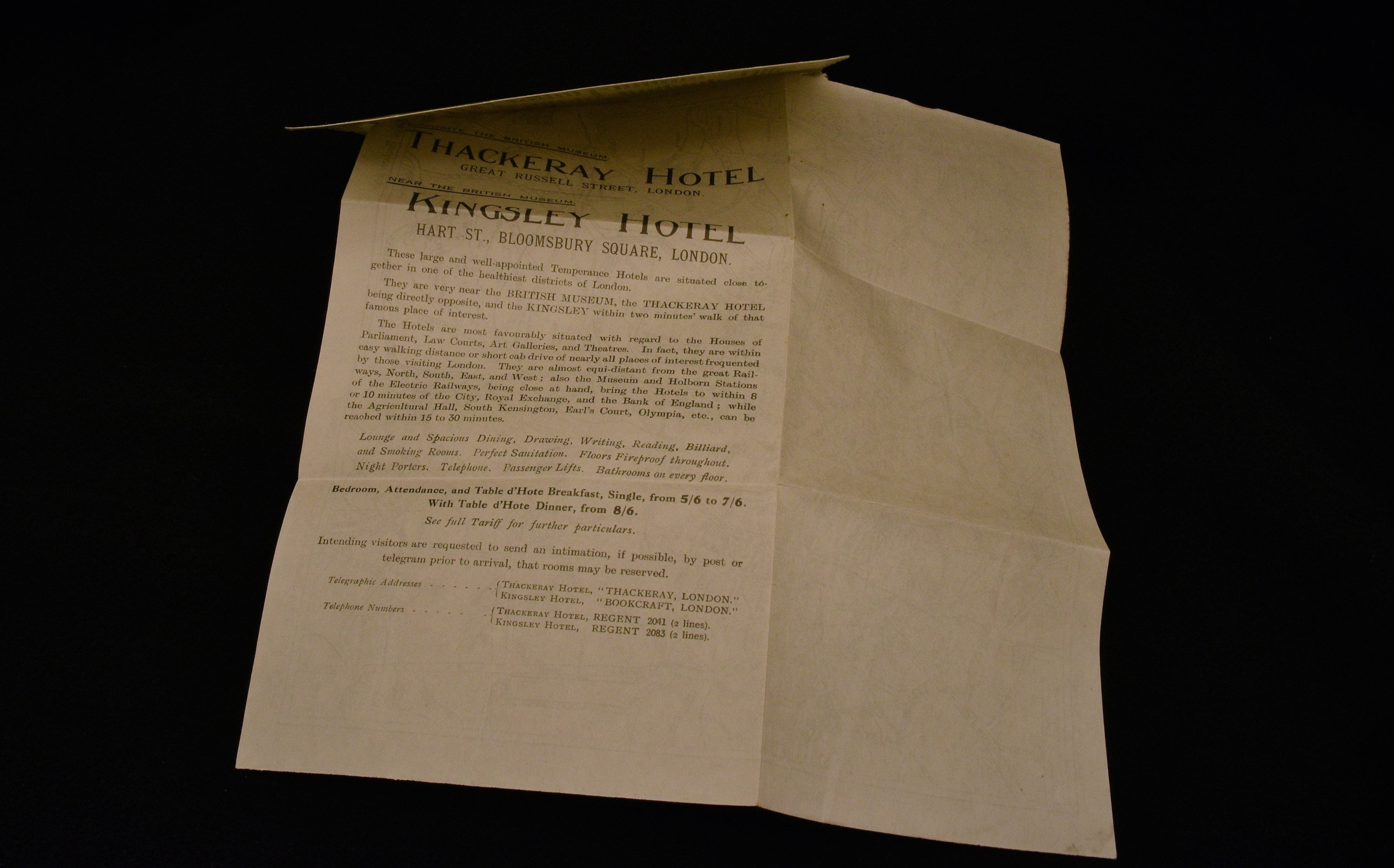
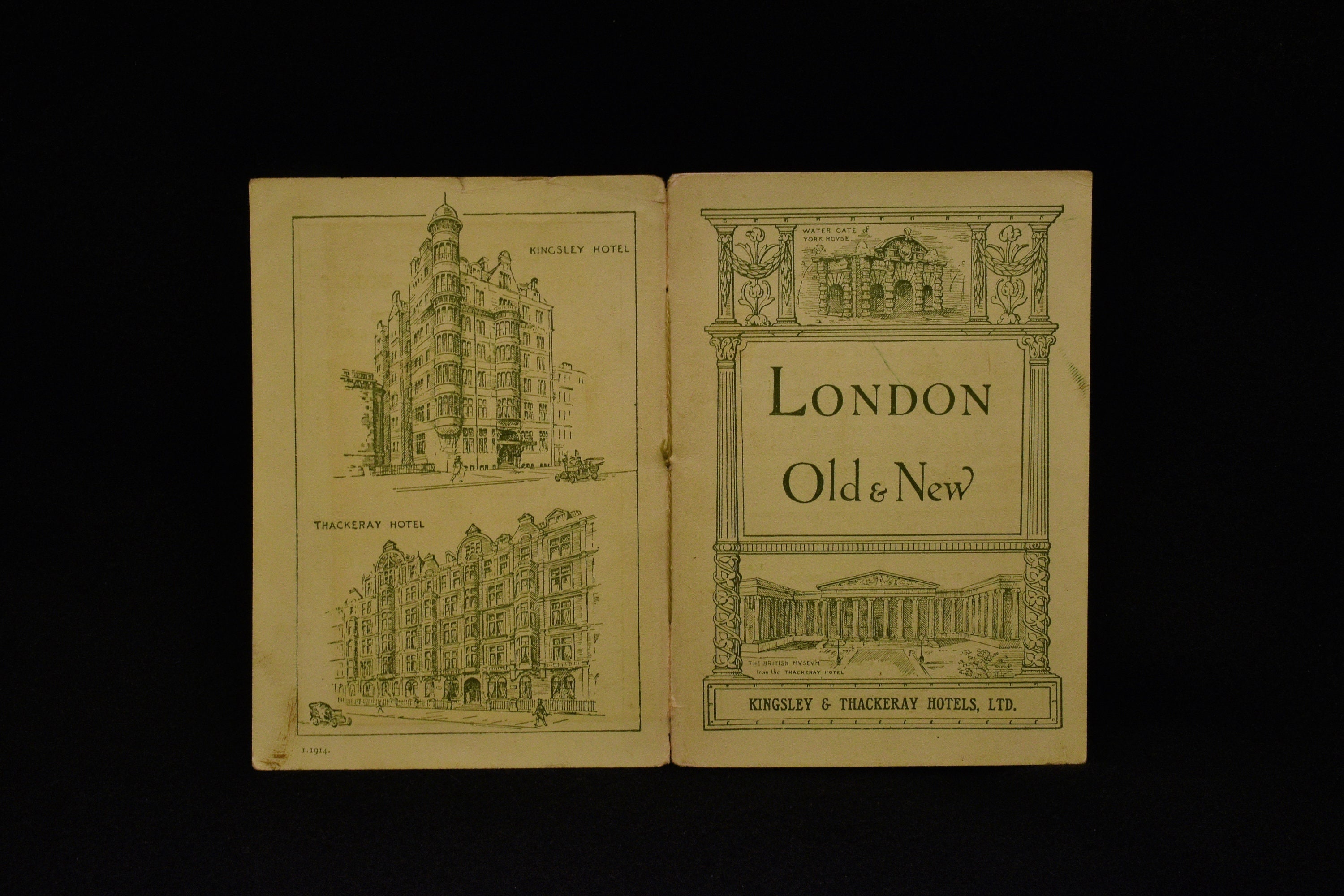
Antiques
Remarkable Antique London Tourist Booklet - Temperance Movement Hotels
$49.27
-
DetailsPlease note -TARIFFS PAID! US buyers need not worry about any additional charges! Order with confidence, knowing you won't be surprised with any additional fees.
This little booklet is exceedingly rare... in fact, I have yet to find it's equal - this 1914 printing is, as far as I can find, the only copy, anywhere! It's not that these booklets can't be found (it's difficult, but not impossible), it's the year of printing that's so rare. These booklets were printed on behalf of the hotels on the cover and showed the sights and details of London, for the growing tourist industry. They mentioned all relevant information that a tourist would need, from the price of public transit, the hotels and their meals as well as museums and interesting buildings or walks surrounding the hotel properties. It even had a page to show exchange rates from the most common currencies from around the world. They were a wonderful bit of information and indispensable to the 1910s world traveler. These booklets were printed in two known runs - 1909 and 1928. The booklets differed slightly, in that by 1928, the rail system had grown to the point that the center of the booklet contained a map of London Electric Rail service. The 1909 booklet had 28 pages, but the 1928 run was added-to and was printed with 32 pages. The 1909 run included a map of London on the back page, but not the 1928 run. All these pedantic details are boring, I know, but these are the small clues that allow us to date and properly identify a piece of rare literature. Despite being separated by almost 2 decades, the pictures within the two publication runs changed very little, with much of the photos remaining unchanged.
This booklet was printed not in 1909 or 1928, but in 1914. It combines some of the features of each booklet, but importantly, it lacks the electric rail map and has the fold-out map of London on the inside back cover. My historic interest doesn't lie in the characteristics of the print edition, however, despite the rarity of the publication. My interest lies in the political movement that resulted in the two hotels you see adorning the cover - The Kingsley and Thackeray Hotels. These were Temperance hotels, meaning they didn't serve alcohol. Temperance was a movement that began in the US in the 1820s and spread around the globe, eventually landing on British shores by the 1830s. It was partnered with a political motion called Chartism. Chartism was a working-class suffrage movement, designed to establish rules and laws surrounding the right to vote. Chartists saw themselves fighting against political corruption and for democracy in an industrial society, but attracted support beyond the radical political groups for economic reasons, such as opposing wage cuts and unemployment. Up to then, only male property-owners were permitted to vote and that resulted in many radical political factions and resistance groups, causing waves throughout the country. The established opinion was that common folk were too uneducated and lacked the self-control needed to participate in the election of government officials. As such, the Temperance movement was started to show those in doubt that common people did indeed possess the self-control to have a say in their country's leaders. This was the beginning of a sort of political awakening for the British. From strikes to peaceful demonstrations, the people began the social upheaval that was needed to necessitate political change. The movement spread like wildfire and was soon an established part of British life. These Temperance hotels sprouted all over the country to the point that every town had their own Temperance hotel. They varied in size and some larger cities had massive, stunning buildings. The two hotels mentioned in this booklet, however, are not just gone, but their histories seem to have been completely neglected. They are briefly mentioned as preferred locations for meetings and town halls, but their dealings and histories as hotels are barely mentioned anywhere. They didn't last very much longer than the 1928 printing and were completely gone by the beginning of the Second World War. Despite their initial successes, the Temperance movement lost traction globally by the 1930s. It seems war tends to push people to drink. Who knew?...
The book itself is in remarkable condition. Every available copy I've seen has been water-damaged or torn, missing pages or no longer bound. Not with this beauty... it is still perfectly string-bound and complete. Not only is it not missing any pages, but the map on the inside rear cover is complete and in pristine condition. Yes, there is some slight surface marring to the cover but it truly is in excellent condition. Being the only available 1914 publication anywhere, it would make a rare and wonderful addition to any collector of the Temperance movement or British history.
As always, should you have any questions or comments, I'm always happy to respond to messages almost immediately.
NOTE: Please ignore the varying colours in the photos... the camera picked up varying shades, for some reason... the original cover picture is the correct shade of white.
Thank you very much for visiting C&K! -
Shipping & Policies
Shipping from Canada
Processing time
1-2 business days
Customs and import taxes
Buyers are responsible for any customs and import taxes that may apply. I'm not responsible for delays due to customs.
Payment Options
Returns & Exchanges
I gladly accept returns and exchanges
Just contact me within: 3 days of delivery
Ship items back to me within: 7 days of delivery
I don't accept cancellations
But please contact me if you have any problems with your order.
The following items can't be returned or exchanged
Because of the nature of these items, unless they arrive damaged or defective, I can't accept returns for:
- Custom or personalized orders
- Perishable products (like food or flowers)
- Digital downloads
- Intimate items (for health/hygiene reasons)
Conditions of return
Buyers are responsible for return shipping costs. If the item is not returned in its original condition, the buyer is responsible for any loss in value.
Frequently Asked Questions
Can I combine delivery on multiple items?
Of course! We'd be happy to assist. Just send us a quick message and we'll make sure to combine your items into a single package to reduce the shipping costs.
